St. Vlad’s Should Move To Texas

The other day St. Vladimir’s Orthodox Theological Seminary announced that it will be selling its facilities and property in Yonkers, and relocating somewhere as yet to be decided. This is great news. Though the Northeast is the historical home of Orthodoxy in America, owing to historical immigration patterns, the Orthodox faith, like all forms of Christianity, has been in serious decline in that part of America. The tale of Orthodoxy’s future in America is told in these two maps. The first is from 2010; the second from 2017:

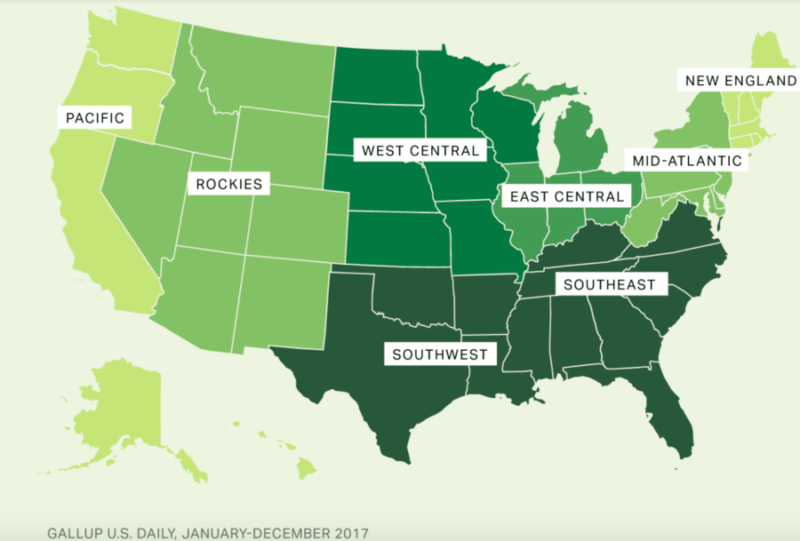
The future of American Orthodoxy lies primarily in the region of this country most open to the Gospel. To be clear for non-Orthodox readers, Orthodox Christians are very few compared to Christians in other churches in this country. And we have declined overall in the past decade. Here is research from 2020. Excerpts:
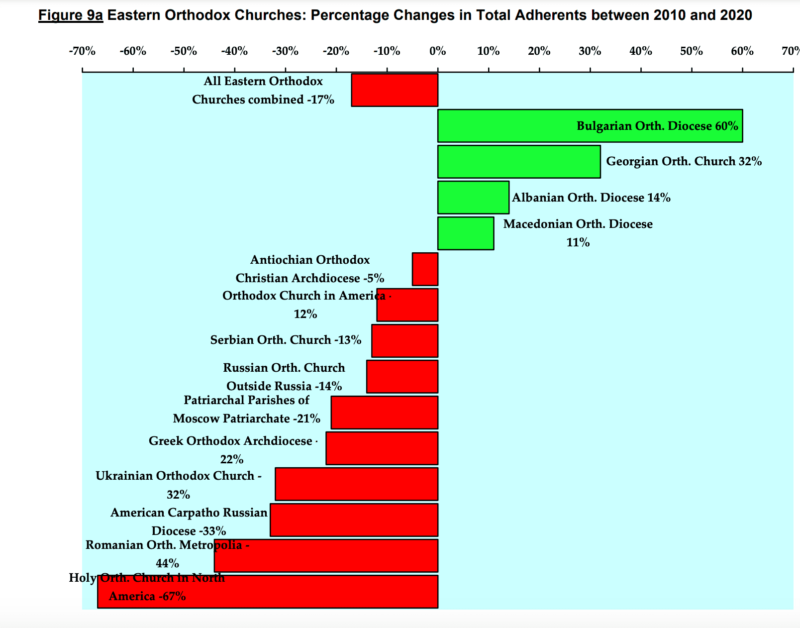
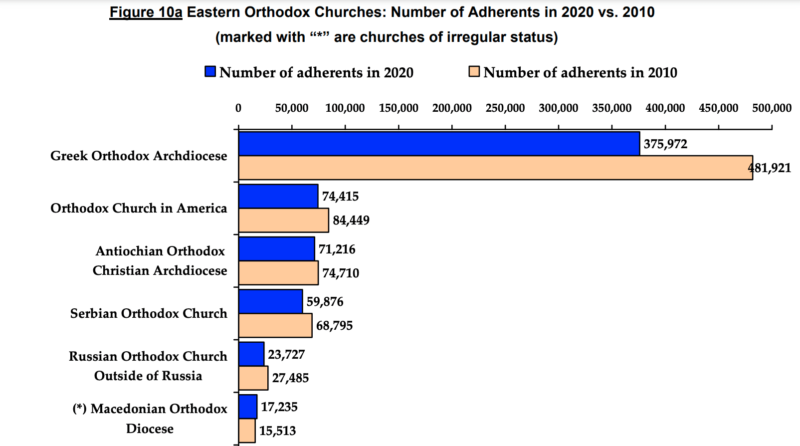
The Greek Orthodox are by far the biggest presence among US Orthodoxy. Yet they are suffering big losses because cradle Orthodox raised in the faith are falling away in adulthood. I am part of the OCA, which is slowly growing, as you can see (sorry, I misread the graph when I posted this morning). The thing about the OCA (whose roots are in the Russian tradition) and the Antiochians (whose roots are in the Arabic tradition) is that they are very convert-friendly. In my own mission parish here in Baton Rouge, nearly everybody is a convert, including our priest. I have observed that this makes visitors feel more at home, in part, I think, because almost everybody there knows what it’s like to show up to an Orthodox parish for the first time, and to feel dazzled but also disoriented.
It might also be because OCA parishes, like Antiochian ones, don’t emphasize ethnicity in the parish ethos. How could we, if so many among us are converts? When my wife and I were exploring Orthodoxy back in 2005, we first attended the big Greek church in Dallas. It was lovely, and people were welcoming to us. But then we attended the OCA cathedral, St. Seraphim, and were really struck by the difference. In the OCA cathedral, despite there being a significant number of Slavic immigrants, it did not feel like the tribe at prayer as it did in the Greek church. I hesitate to criticize the Greek church, because they were friendly and open to us, and I know non-Greeks who converted in a Greek parish, and are thriving in their faith. Had we become Orthodox at that parish, I am sure we would have thrived. But back then, we had the impression (false or not) that it would be more difficult for us to grow as Orthodox Christians there because we were not Greek. It makes sense that an Orthodox parish that focuses heavily on the universality (catholicity) of the Orthodox faith, as opposed to its ethnic particularity, would be more appealing to potential converts in the US.
Again, the numbers alone do not tell the story of Orthodoxy in America’s present and future. If you look at this chart, you will think that New York City is the capital of American Orthodoxy. It once made a lot of sense to found St. Vladimir’s Orthodox Theological Seminary in suburban NYC:
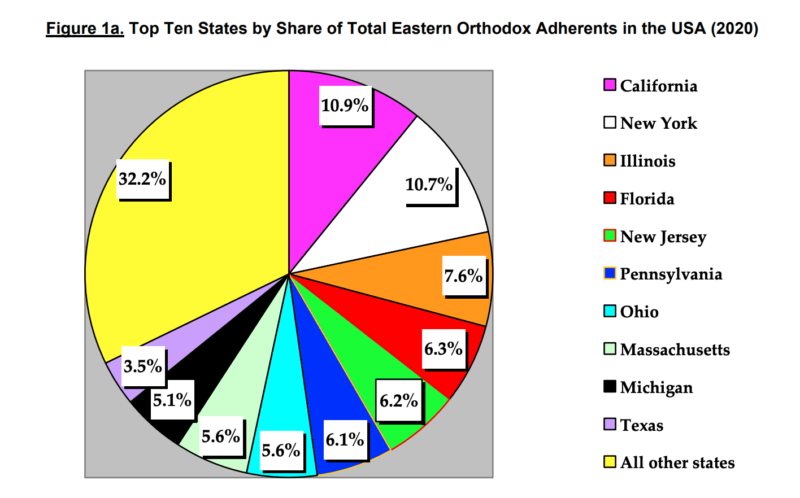
Again, though, this is a snapshot of the past. The Orthodox in the legacy states are largely not reproducing themselves. Twenty years from now, when the Boomers have gone on to that great coffee hour in the sky, the chart will look very different.
This chart — another from Orthodox researcher Alexei Krindatch — gives a clue as to why:
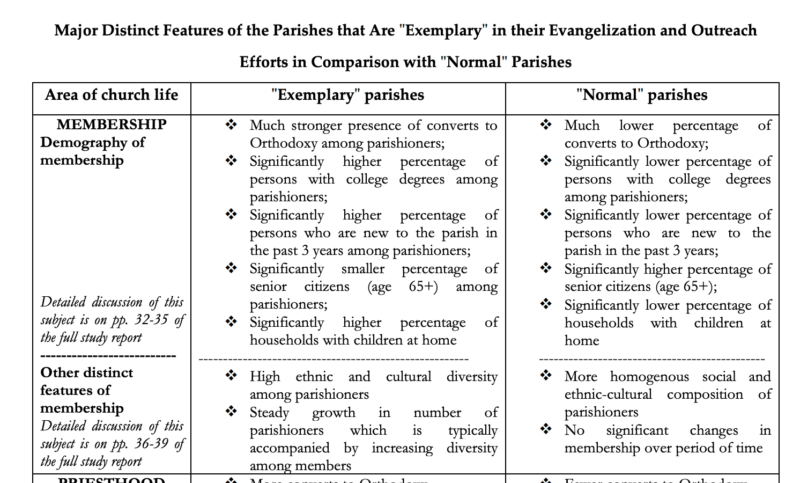
Krindatch, who carries out his research on behalf of the US Orthodox bishops, found that the Orthodox parishes that are growing are those that are convert-friendly, diverse, and open to young families. Again, this stands to reason. In our case, it felt more fitting to attend a church where our ethnicity was not an issue, and in which there were plenty of converts who anticipated our questions and who could help us work through this or that issue. It’s a real challenge for more ethnically oriented churches (Greek, Russian, whatever), because in preserving ethnic roots and culture, they are doing important work … but it may also be work that undermines their ability to survive as Christian parishes. It can too often seem that the work of a particular parish is focused primarily on the ethnos, not the Logos.
What does this have to do with moving SVOTS? It’s plain to me that the premier pan-Orthodox seminary in America should relocate to where the long-term growth area of American Orthodoxy is. I believe the Dallas-Fort Worth metropolitan area is the ideal place.
First, Texas is religiously active in a way I have not encountered anywhere else I’ve lived. Seriously, even here in next-door Louisiana, the enthusiasm for the Christian faith is not like in Texas. I lived in Dallas from 2003 until early 2010, and one of the things I loved most about it was how normative Christian faith was across traditions (Catholic, Protestant, Orthodox). And, the sense of ecumenical brotherhood in north Texas is strong.
Second, there are strong Orthodox parishes there, of several jurisdictions. The Greeks have a big presence, with Holy Trinity church. The OCA cathedral, St. Seraphim, is just outside of downtown Dallas, and continues to grow (a friend there sent me a photo of the new crop of catechumens: twenty of them, and they all look to be young). Plus, inside the cathedral is the tomb of Archbishop Dmitri (Royster) of Dallas, the apostle of Orthodoxy to the South. Click on that link to read about this incredible man, and his missionary fervor. Born a Texas Baptist, converted as a teenager to Orthodoxy, a speaker of Spanish with a passion for Latino culture, Vladyka had a big heart for missionary work. My family and I were received into Orthodoxy in the final years of his life, and I can attest to his holiness and fatherly care. Plus, I believe he will be canonized one day. Vladyka Dmitri’s body was disinterred five years after his burial, so it could be transferred to the tomb built for him inside his cathedral. They discovered his body was incorrupt (see here; there’s a photo), which is taken by Orthodox and Catholics to be a sign of sainthood.
Plus, there is an Orthodox classical Christian school, St. Peter’s, in Fort Worth. And DFW has an international airport, which is important given how internationally oriented the seminary is. And the great Orthodox iconographer Vladimir Grygorenko lives in the DFW Metroplex.
Admittedly, I’m biased towards DFW because that’s where I found Orthodoxy, and I have such warm feelings about it. But I think objectively, the DFW Metroplex makes a lot of sense for the SVOTS relocation. Back in 2009, when my family and I were planning to relocate to Philadelphia for a job, I mentioned to a seminarian in our parish who was at St. Tikhon’s seminary in Pennsylvania at the time that we were thrilled to be moving to a city and a region that had lots of Orthodox parishes. He told me that we were naive. He said, “You will find that Orthodoxy in the Northeast is not the kind of Orthodoxy that you have here in Texas.” He was right, I’m sorry to say. There are exceptions, of course — I’m thinking about the great Antiochian parish St. Philip’s in Bucks County, but there are others — but mostly my experience with Orthodoxy in the Northeast and Mid-Atlantic is of churches in decline, which again, is consistent with the decline of Christianity overall in that region.
For various theological and sociological reasons, I believe Orthodox Christianity is on the cusp of real growth in our country. As I’ve written here recently, Orthodox priests around the US are reporting surprising numbers of newcomers showing up during Covid. In our own mission parish in Baton Rouge, we have experienced the same thing, and most of them are young — in their twenties, and even a few teens. When asked why, they all give some version of the same reason: because Orthodox faith and life strikes them as real and solid, in ways they did not get in their previous tradition. To me, they are seeing the same thing I saw, and do see. They’re right! I sense that we Orthodox have a tremendous opportunity for evangelizing among the young, even in a time of overall religious decline. The young people at my mission parish all know that if Christianity is going to endure what’s happening now, and what is to come, it will have to be a deep and resilient form of the faith. That’s why they are discovering Orthodoxy.
I hope SVOTS can shake the dust off its sandals and head to Texas. Everybody else is these days, so why not?